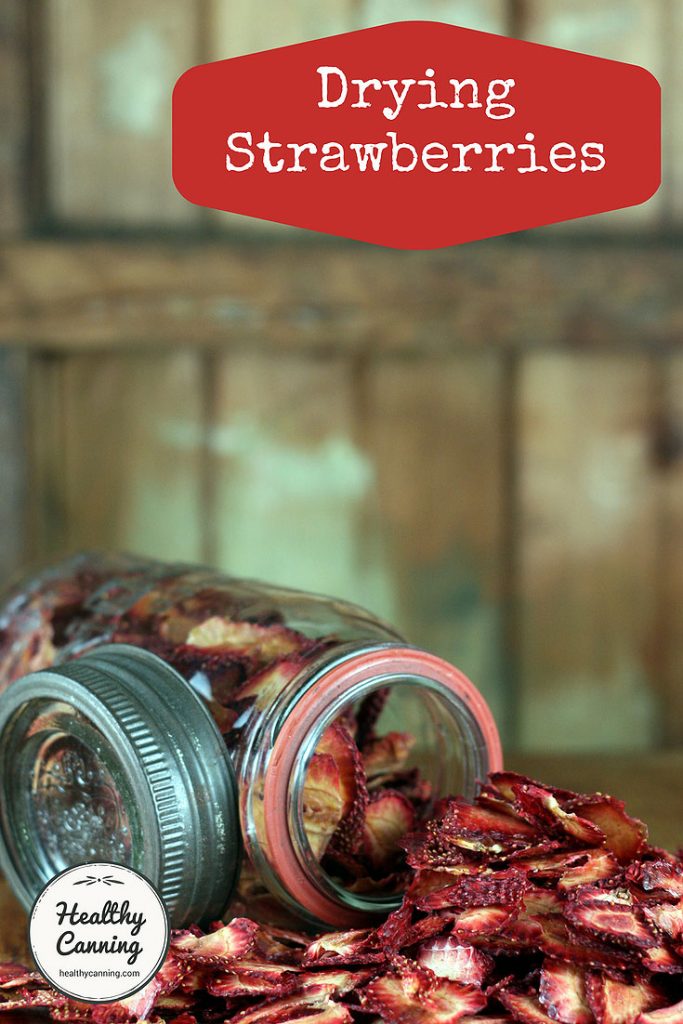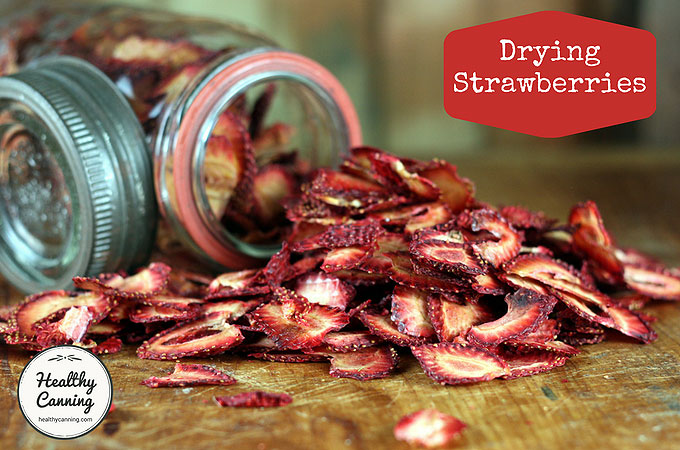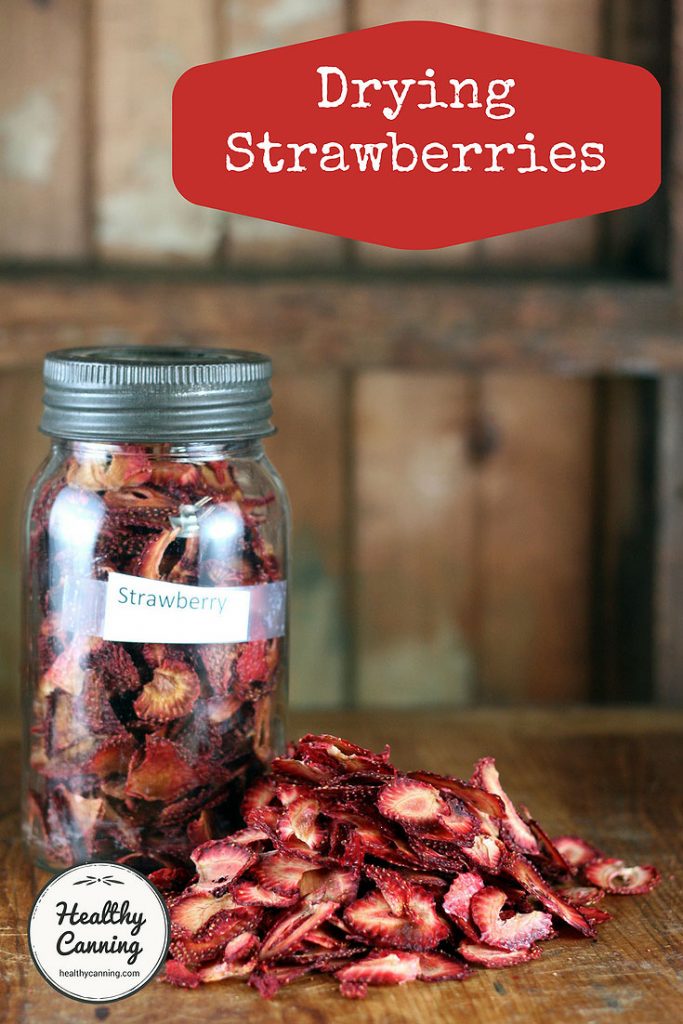Strawberries are very easy to dehydrate. The preservation technique results in a high quality product, with the strawberries retaining a great deal of both their fragrance and flavour.
See also: Various home canning recipes for strawberries
Yields and Equivalents
By weight, expect to end up with roughly 1/10th the weight of what you purchased.
1.1 kg (2.4 lbs) as purchased, fresh with hulls = 1 kg (2.2 lbs) fresh, hulled = 110 g (3.8 oz / 2 cups) of dehydrated slices
(Note: Going by Ball’s water loss weight test formula, we would have expected a yield of approximately 280 g instead of 110 g. Admittedly, we are not lab-trained professionals with access to a full lab — that being said, three times our yield was 110 g instead of 280 g. Your mileage may vary. Dec. 2017.)
Directions
Here we compare directions from three different sources.
Allow 1 standard square Excalibur drying tray per ½ kg (lb) of sliced strawberries.
Ball Blue Book
Preparation: “Gently wash. Remove caps. Cut into ½ inch (1 cm) slices.”
Pretreatment: None.
Temperature: 130 to 135 F (54 to 57 C)
Time: Until pliable to almost crisp.
Notes: “Choose ripe, juicy red berries. Strawberries do not rehydrate well.”
Water content: 90%. (Used if doing a Dehydration Weight Test.)
Reference: Ball Blue Book, 37th edition, 2014. Page 165.
Note: Ball All New (2016) says “Wash, remove hulls. Halve or into ½ inch (1 cm) slices.” (Page 336)
Excalibur
Preparation: “Carefully wash, cut off the caps, and slice ¼″ to ⅜″ (½ to ¾ cm) thick.”
Pretreatment: None.
Temperature: 135 F / 57 C
Time: “Until leathery and crisp.” (7 to 15 hours based on humidity conditions where you are.)
Notes: “Gem, Streamliner, Superfection, Ogallala, and Dunlap are all excellent when dried.”
Quality: Good
Reference: Excalibur. Preserve it naturally. 4th edition, 2012. Page 42.
So Easy To Preserve
Preparation: Wash and drain.
Pretreatment: None
Temperature: 140 F / 60 C
Time: 24 to 36 hours [sic]
Quality: Fair to good. (Excellent for fruit leathers.)
Reference: So Easy To Preserve. 6th Edition. 2014. Page 343.
Storage
Let the dehydrated product cool completely to room temperature before packing it into storage containers.
Watch the sealed containers for the first few days for any sign of condensation. If condensation occurs, dehydrate a bit more.
Label jar with name of product and date. Store away from heat and direct light.
Usage notes
Use in baked goods, cereals, desserts, frostings, fruit compotes, pancakes, pies, puddings, sauces, in yoghurt, and as a snack.
Further reading
Strawberries: Safe Methods to Store, Preserve and Enjoy. Harris, Linda J. University of California, Davis. ANR. Pub 8256. April 2007.
Strawberries. UCCE Master Food Preservers of Orange County. (Link valid as of Jan. 2018)




Leave a Reply